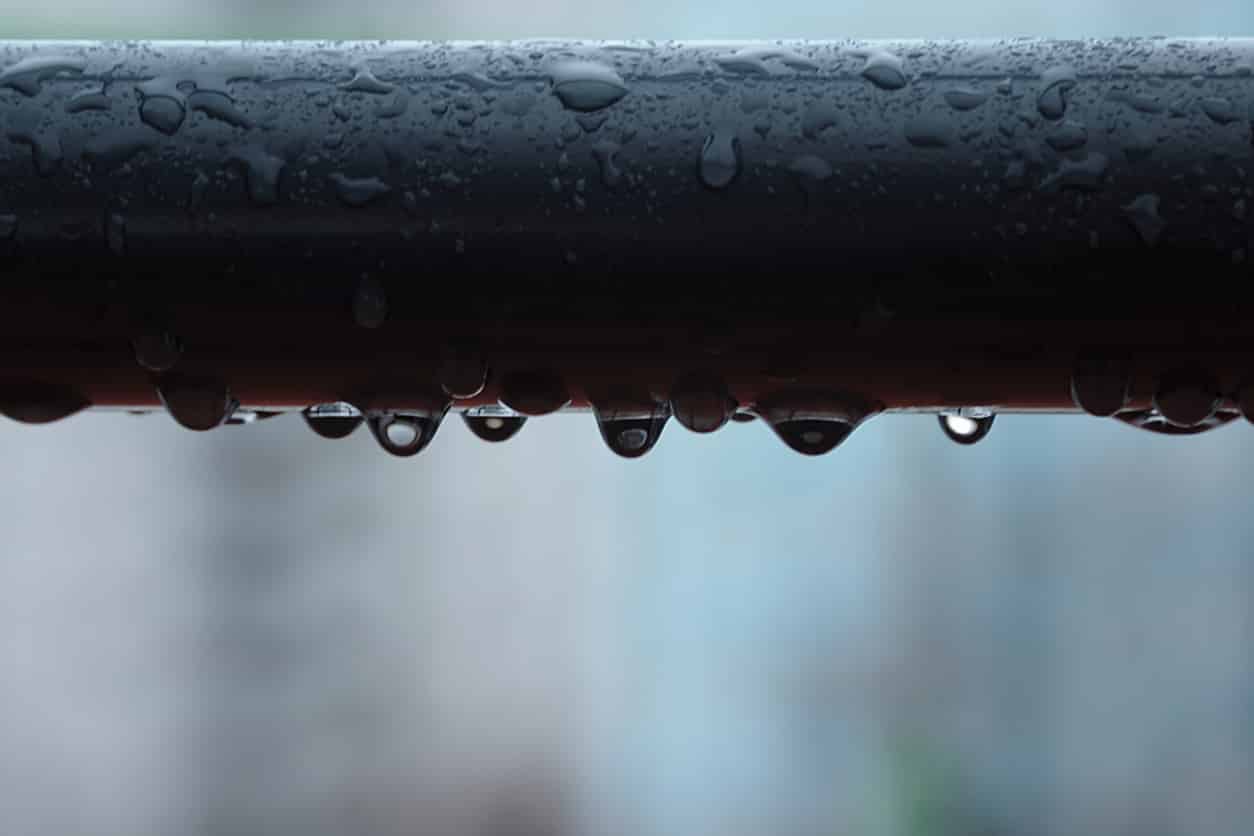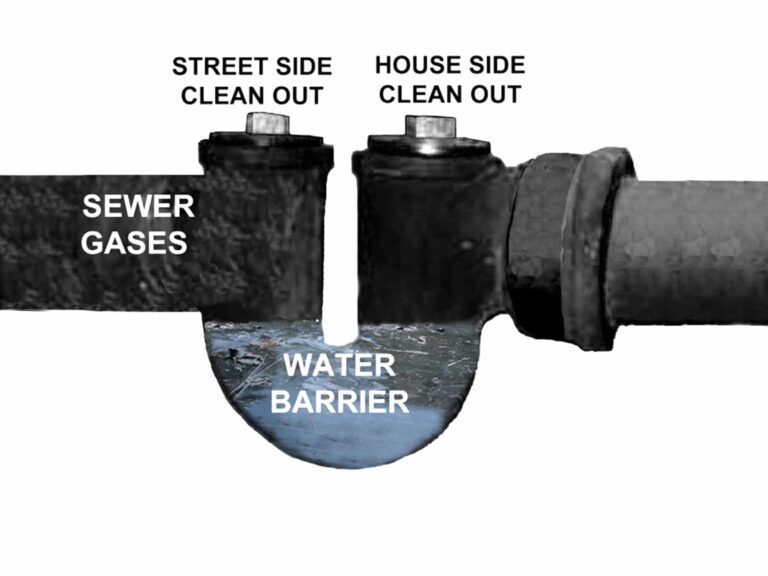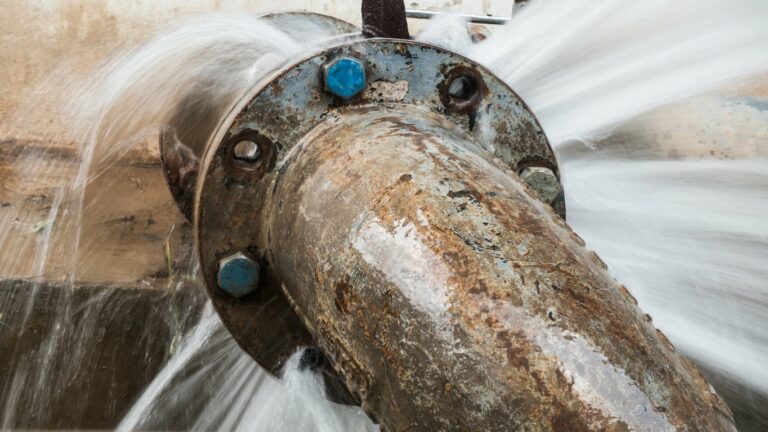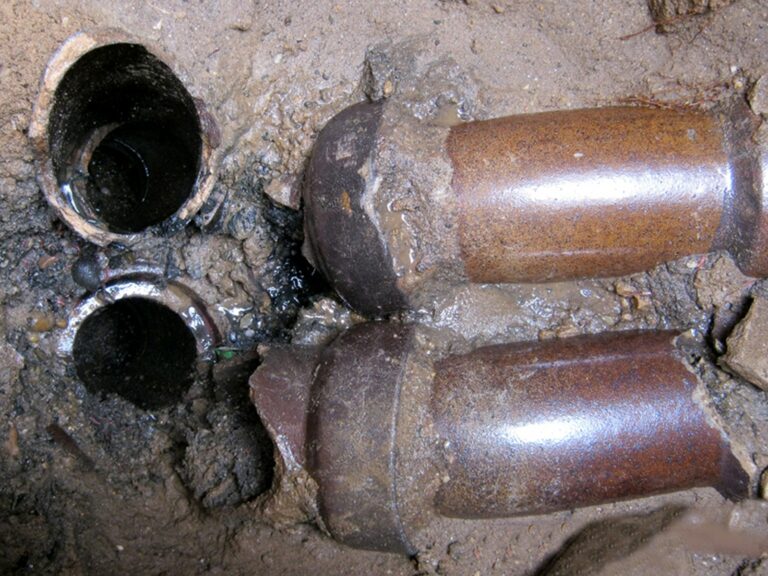In many parts of the country, the summer months can be brutally hot and humid. The combination of high temperatures and excessive moisture in the air can cause several problems in your home, including sweaty pipes or pipe condensation. Condensation on water pipes is most commonly referred to as sweating pipes.
Pipe condensation occurs when the air around your pipes is significantly warmer than the water running through them. This causes the water to condense from the warm air onto your pipes. This can eventually lead to dripping or even pooling of water on your floor.
Sweating pipes, or pipe condensation, can lead to water damage, mold growth, and safety hazards in your home. Understanding what causes this issue and how to prevent it can help you avoid costly repairs and maintain a safe living environment.
Key Takeaways
- What Are Sweating Pipes? When warm, humid air condenses on cold water pipes, forming water droplets.
- Common Problem Areas: Basements, kitchens, bathrooms, and laundry rooms.
- Risks: Water damage, mold growth, and slip hazards in poorly lit areas.
- Prevention: Pipe insulation and dehumidifiers help reduce condensation.
- Safety Concerns: Dripping water can create electrical hazards if it contacts wiring.
What Are Sweating Pipes and How Do They Happen?
Sweating pipes occur when warm, humid air meets cold water pipes, causing condensation to form. This results in water droplets accumulating on the pipe’s surface, leading to potential water damage, mold growth, and safety hazards if left unaddressed
The problem can be compared to a glass of iced water on a hot day. The outside of the glass will “sweat” as the cold air from the ice condenses on the warm glass. In the same way, your pipes will “sweat” when the warm, moist hot air hits the cold pipe. While the process is very normal, it can lead to an increase in the amount of moisture in your home. Additionally, the water droplets can damage surrounding surfaces or even create a fire hazard if they drip onto electrical wiring.
Pipe condensation and sweating pipes can both be frustrating, cause damage, and even be dangerous. However, there are some easy things you can do to prevent the condition.
What Problems Do Sweaty Pipes Cause?
Sweaty pipes can cause several problems, including the following:
- The water droplets can drip onto surrounding surfaces, causing water damage.
- The extra moisture can encourage the growth of mold and mildew.
- If the water droplets drip onto electrical wiring, it could create a fire hazard.
- Condensation can create slippery surfaces, and cause slip and falls.
What 4 Areas of a Home are Most Affected by This Issue?
Sweating pipes can affect any area of the home. However, some areas are more prone to the problem than others. These include:
Basements
Basements contain your heating units for the house, and provide hot water. Therefore it is an area prone to have cold water pipes exposed to hot air that will also have a low amount of humidity.
Kitchens
Most kitchens have at least one cold water supply line and one hot water supply line. These are often located on an exterior wall, which can make them more susceptible to sweating. In addition, many people use their kitchen sink for tasks that require a lot of water, such as washing dishes. This can cause the pipes to sweat more due to the increased water flow.
Bathrooms
Like kitchens, bathrooms typically have both cold and hot water supply lines. They are also often located on exterior walls. In addition, many people take showers and baths, which can cause the pipes to sweat more due to the increased water flow.
Laundry rooms
Many homes have a laundry room with a washer and dryer. The laundry room typically has both cold and hot water supply lines. In addition, the washer and dryer often generate a lot of heat, which can cause the pipes to sweat.
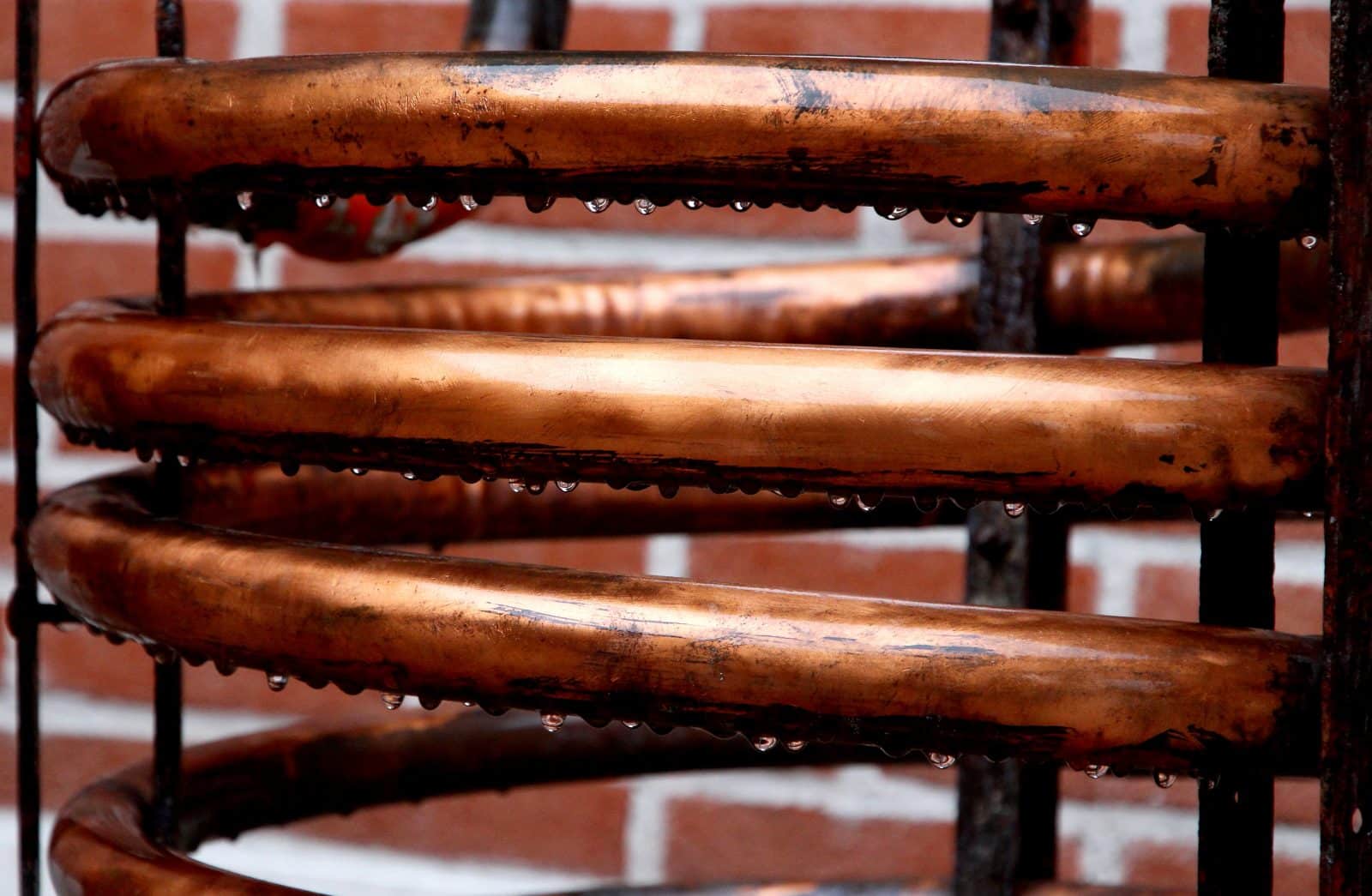
Reasons Why Sweating Pipes Are An Issue
Sweating pipes can be a nuisance for a few reasons. But how can it negatively affect a home?
1. Sweating pipes can damage flooring and walls
Water that drips from sweating pipes can damage flooring and walls. The water can seep into carpeting and damage the fibers. The water can also ruin hardwood floors by causing them to warp or swell. In addition, the water can damage wallpaper and paint.
2. The water that drips from sweating pipes can create mold and mildew
Mold and mildew can cause health problems. The spores from mold and mildew can cause respiratory problems, such as asthma. In addition, they can cause skin irritation, headaches, and nausea. In terms of cost, proper and professional mold remediation is fairly expensive.
3. The water that drips from sweating pipes can be a trip hazard
In many areas where pipe condensation takes place, there is poor lighting, such as in a basement. This creates a situation where you can encounter a slippery surface before you have time to spot it. Slipping and falling on your basement floor has the potential for injury. This may be of particular concern if your basement is used as a play place for young children.
How to Identify and Eliminate Sweating Pipes
Sweating pipes are usually easy to identify. The most common symptom of sweating pipes is water stains on the ceiling or walls near the affected pipes. Another common symptom is water drips or puddles on the floor near the affected pipes. If you suspect that your pipes are sweating, you should check for these symptoms.
Sweaty Pipes vs. Pipe Condensation
If you do find water stains on your ceiling or walls, it is important to determine whether the water is coming from the pipes or if it is just condensation.
To do this, you can tape a piece of plastic over the area and check it after a few hours. If the plastic is wet, then the water is coming from the pipes. If the plastic is dry, then the water is just condensation.
How Do You Stop Condensation On Pipes or Sweaty Pipes?
Similar to preventing shallow pipes from freezing underground, the best way to eliminate sweating pipes is to insulate the affected pipes. You can do this yourself by purchasing pipe insulation (not regular house insulation for a wall) from a hardware store or home improvement store.
Pipe insulation is available in a variety of materials, including foam, rubber, and fiberglass. It is important to measure the circumference of your pipes before purchasing insulation so that you purchase the correct size. There is even specialty insulation to prevent pipes from freezing underground.
Once you have your insulation, cut it to size and wrap it around the pipe, securing it in place with tape or another method. This will help to prevent moisture from condensing on the outside of the pipe and dripping down. The insulation creates a thermal barrier between the cold pipes and the warm air. In extreme cases, you may need to purchase a dehumidifier to help control the moisture in your home.
Wrapping Up About Sweating Pipes
If you have any questions about preventing or eliminating pipe condensation and sweaty pipes, you may be immediately alarmed and think that there is a problem with your plumbing. However, in most cases, this is not the case.
Pipe condensation and sweating pipes are relatively common occurrences, and can usually be fixed with some simple steps. If you are still concerned, you can always contact a professional to come and take a look at your home’s plumbing.
Balkan Sewer and Water Main Service provides the best service for fixing any sewer and water main problems you may have. But the folks at Balkan also like to share helpful tips and information about all of the plumbing that makes up your home’s plumbing system.
If you have wondered why you have sweating pipes and puddles of water from pipe condensation, think about contacting Balkan today. Our team will be happy to provide you with more information and help you find a solution that works best for your home. If you require a site visit, Balkan provides site visits at no charge or obligation to hire us. The Balkan YouTube channel also provides valuable tips on various plumbing issues. Check it out today!

